Our Methods
What is Deep Oscillation Therapy?
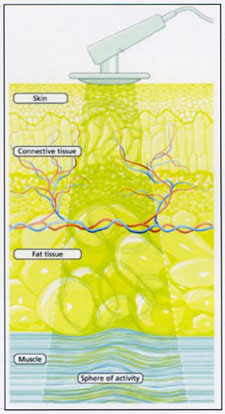
Deep Oscillation therapy is a totally unique type of physical therapy; it is used by doctors and therapists in hospitals and clinics throughout Europe and America and is now available in the UK….
Deep Oscillation therapy is characterised by an intermittent electro-static field, which is built up between the hands of the therapist or an applicator attachment and the soft tissue of the patient, by means of the Hivamat machine. The patient’s tissue is then attracted and released in the selected frequency, which through a unique patented process triggers a deeply penetrating and lasting resonance, (Deep Oscillation) of the tissues. What makes this form of therapy unique is that it penetrates much deeper into body tissue than traditional manual methods thus allowing previously ‘untreatable’ injuries to be manipulated with the minimum of physical pressure. Electrostatic waves create a kneading effect deep within the damaged tissue, restoring flexibility and blood supply to the affected area.
Accelerated regeneration of injury, swellings and bruises.
Ailments that can be treated by Deep Oscillation therapy:-
- Achilles Tendon Inflammation
- Arthritis
- Back, Neck and Shoulder Pain
- Carpal Tunnel Syndrome
- Fibromyalgia
- Fractures
- Golfers Elbow
- Heavy/Irritable Leg Syndrome
- Haematoma
- Knots & Tissue Nodules
- Ligament Overstretched
- Ligament Rupture/Tear
- Lumbago
- Muscle Ache
- Muscle Fibre Rupture/Tear
- Muscle Spasms
- Muscular Rheumatism
- Muscular Pain & Exertion (Microtrauma over-use injury)
- Plantar Fasciitis
- Scar Tissue
- Fibrosis Sciatica
- Sports Injuries
- Sprain/Strains
- Swellings
- Traumatic Pain
- Vertebral Fracture
- Whip Lash
You can find out more information about Deep Oscillation Therapy and what it entails viathe following link:-
www.physiopod.co.uk
The Bowen Technique

The Bowen Technique is a straightforward, no-nonsense complementary therapy that is a gentle yet highly effective way of helping people to become pain-free without resorting to manipulation, needles, pills or massage.
Therapists treat the body as a whole rather than just the symptoms.
They use gentle rolling moves over precise parts of the body using the thumbs and index fingers that trigger the body’s natural healing responses so that it resets itself.
The body continues to respond for several days afterwards, the most common reaction is a deep sense of overall relaxation and lessening of muscular tension and pain. Improvement is often experienced within a few days. Results tend to last for a long time.
The Bowen Technique is unique. It works on the physical, emotional, chemical, mental and energetic levels for the body to promote natural healing. Osteopaths, Chiropractors, Sports Therapists and Physiotherapists are among the many professional practitioners who recommend and use the Bowen Technique.
How does it work?
The Bowen Technique works primarily through the nervous system. The moves stimulate precise points on the body in groups of two to eight at any one time. They stimulate the following systems:
- Muscles and Soft Tissues
- Nerve Pathways
- Blood and Lymphatic Circulation
- Energy Flow
During the treatment there are periods where the client is left to relax and allow the body to gently absorb the moves that have been performed. This allows the body to make subtle and fine adjustments to help relieve pain and tension and initiate the healing process. The Bowen Technique encourages the body to reset itself. There is no manipulation or adjustment of hard tissue and no force is used or needed. It is not a form of massage.
Each person responds differently, at different rates and to different degrees. That is why Bowen is so gentle and relaxing, it allows the body to respond at its own level. It is therefore very subtle and non-invasive. Once the problem is dealt with clients like to return for regular maintenance. It is a complimentary therapy that enhances but does not interfere with traditional medicine.
You can find out more information about the Bowen Technique and what it entails via the following links:-
www.thebowentechnique.com
The Sarah Key Method
Sarah Key is an Australian Physio with an international reputation for treating problem backs. Sam Seal is now accredited in the Sarah Key Method of spinal treatment.
A relatively new and very exciting method of treating back pain (both lower and upper pain). Sarak Key proposes that ‘simple back pain’ develops when an intervetebral disc loses water content and stiffens. This can be painful in itself and it also restricts movement of that spinal segment.
Over time this stiffness progresses and has a knock on effect to the spinal joints above and below. Without attention or treatment this can lead to acute episodes of back pain or long-term chronic lower-back pain.
Sam is now qualified and specially trained in the Sarah Key Method (SKM) and can use the heel of the foot to effectively mobilise these stiff spinal segments, creating greater forces on the spine with much less pain for the patient and less effort for the therapist.
Sarah Key’s unique method of mobilising a stiff spinal segment is followed by specific spinal decompression treatment to introduce pressure changes through spinal segments that make immediate use of segmental freedom gained with the the treatment. These procedures use the Back Block Routine (also available through Sam Seal Sports Therapy at the price of £9.99) to improve disc nutrition and strengthen the muscles that control the individual spinal segments.
You can find out more information about the Sarah Key Method and what it entails via the following links:-
www.sarahkey.com
www.simplebackpain.com
MLS Laser Therapy
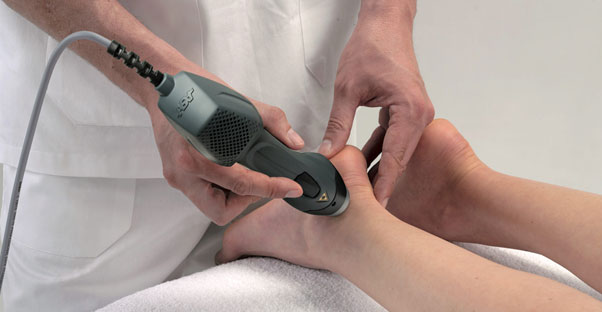
Get active again with Laser Therapy
Safe, non-invasive and painless treatment.
Ask us for further details on laser therapy and get back to doing what you love.
For rapid relief of pain, swelling and inflammation, useful for a range of conditions including:
- Muscle spasm and pain
- Arthritis
- Sprains and Strains
- Back Pain
- Hip pain
- Knee pain
- Sciatica
- Bursitis
- Tendonitis
- Haematoma and oedema
- Sports injuries

Have Low Level Lasers been Scientifically Studied & Proven?
Low level lasers have been used world-wide for over 30 years. The FDA has approved lasers for specific conditions. Over 2500 studies have shown that low level lasers:
- REDUCE PAIN by stimulating cells to produce their own endorphins, natural pain killers.
- PROMOTE FASTER HEALING by stimulating cells to increase the production of two major healing enzymes by as much as 75%.
- REDUCE INFLAMMATION by as much as 75%.
- INCREASE BONE REPAIR SPEED by stimulating fibroblastic and osteoblastic proliferation.
- RELAX MUSCLES and muscle spasms.
- DECREASE SWELLING by stimulating lymphatic drainage.
- ENHANCE THE IMMUNE SYSTEM by increasing the number of “killer” cells by 400-900%, and most importantly,
- RE-ENERGIZE CELL MEMBRANES to allow transport of essential nutrients across cell walls allowing a healthy new cell to grow (nutrients will not cross an injured or sick cell wall, thus slowing healing).
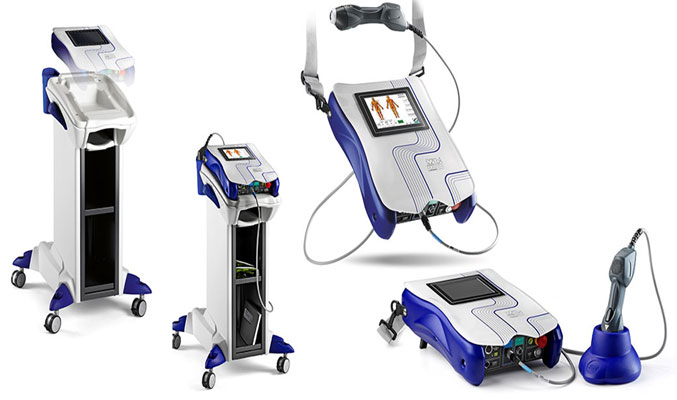
Does laser therapy hurt?
Laser therapy, like physiotherapy and sports massage, offers a great deal of benefits and pain relief. During sessions you do not feel any discomfort as the process is pain free.
What Happens during a laser therapy session?
You will be asked to wear safety glasses as protection for the eyes. The laser therapy probe is then prepared, and pressed on the affected area(s), enabling the laser to be delivered precisely and directly through the skin. These laser waves reduce inflammation and pain in the injured tissue that is being treated and prompts the body to respond naturally by increasing blood circulation, the number of blood vessels and therefore metabolism in the injured tissue. This is what helps to support the healing process.
MSK Ultrasound
What is MSK ultrasound?
A Musculoskeletal (MSK) Ultrasound is a specialized exam that looks specifically at your muscles and joints. MSK ultrasound technologists have special training in looking at muscles, some ligaments, nerves, and tendons. A radiologist will interpret these images to determine if they are normal or not.
Who can get an MSK Ultrasound?
Anyone can have an MSK Ultrasound. These exams are not limited to athletes or young people; if you have pain or a concern with your joints or muscles, an MSK ultrasound may be appropriate.
Why get an MSK Ultrasound?
An MSK ultrasound may help determine the source of your muscle or joint symptoms. For example, if you have a lump that you are concerned about, we will examine if it is fluid-filled or solid, where it is located, and if it is attached to anything. Each answer can lead to the appropriate treatment, or to further investigation.
If an injury to your tendon or muscle is suspected, we can see if it is intact or torn. Ultrasound can help determine the extent of the injury, sometimes clarify if surgery is indicated, and assess how well these injuries are healing.
Some common diagnoses that may be evaluated by an MSK Ultrasound include:
- Tears to Ligaments, Muscles and Tendons
- Bleeding in Muscles or Joints
- Fluid Build-up
- Soft Tissue Tumour’s
- Bursitis
- Rotator cuff tears
- Carpal tunnel syndrome
- Sprained ankle
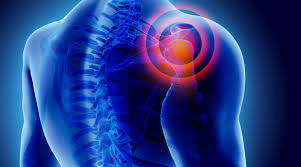
Shoulder Ultrasound Scan
Shoulder ultrasound is consistently utilized in the assessment of the shoulder. it is quick painless ultrasound scan examination and readily available. For the assessment of rotator cuff problems such as bursitis, tendinosis or tendon tears. Symptoms would include shoulder pain and reduced mobility.

Hand Ultrasound Scan
The bones of the hand and wrist provide the body with support and flexibility to manipulate objects in many different ways. Each hand contains 27 distinct bones that give the hand an incredible range and precision of motion. The forearm’s ulna radius support the many muscles that manipulate the bones of the hand and wrist.
Specific situations in which ultrasound offers definite benefits include evaluation of tendon inflammation and rupture, evaluation of palpable masses or suspected occult masses, and evaluation of suspected foreign bodies.
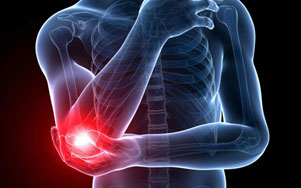
Elbow Ultrasound Scan
The elbow joint is a complex joint composed of three communicating joints that share a common synovial membrane. Ultrasound scans are frequently requested for the examination of patients with elbow pain, which is generally caused by overuse syndromes, trauma, inflammatory diseases, or neuropathies. Any activity that involves excessive flexion-extension movements of the elbow can result in undue stress on the ligaments, tendons, and muscles that stabilize the joint. Nerve entrapment as in Radial Tunnel Syndrome, carpal tunnel or median nerve entrapment neuropathy and cubital tunnel or ulnar nerve entrapment neuropathy can also occur. These types of injuries happen gradually over time and can aggravate existing conditions such as Tendonitis. Tennis Elbow and Golfer’s Elbow are examples of common overuse injuries.
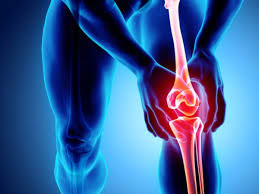
Knee Ultrasound Scan
Knee problems and knee pain are common as the knee is a frequent point of contact during traumatic accidents and is prone to wear and tear due to its weight-bearing nature. It is also a common site for arthritis pain. The knee joint is made up of four main things: bones, cartilage, ligaments, and tendons. Three bones meet to form your knee joint: your thighbone (femur), shinbone (tibia), and kneecap (patella).
Ultrasonography is a non-invasive imaging modality used for the assessment of the knee joint. It can provide clinically useful information on a wide range of pathologic conditions affecting components of the knee joint, including the tendons, ligaments, muscles, synovial space, articular cartilage, and surrounding soft tissues. Colour and power Doppler techniques can be used to measure neovascularization within the synovial lining of the joint, tendons, and soft-tissue masses.

Foot Ultrasound Scan
Musculoskeletal ultrasonography is a very powerful diagnostic tool for the diagnosis of a wide array of foot and ankle problems such tendinosis, tenosynovitis, paratendinitis, rupture, dislocation, ligaments that are commonly torn, plantar fasciitis, Morton’s neuroma, stress fractures, and plantar plate injury.
Sports and overuse injuries of the ankle and foot are common, and ultrasound has been established as an excellent diagnostic modality for foot and ankle pathologies, providing a rapid non-invasive examination tool that is well tolerated by the patient with acute or chronic pain. The opportunity for dynamic examination is another advantage of ultrasound in evaluating ankle and foot pathology, where manoeuvres such as muscle contraction and stressing of the joint may be particularly helpful.
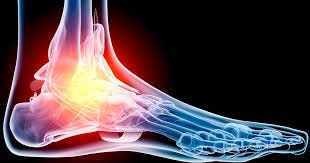
Ankle Ultrasound Scan
Musculoskeletal ultrasonography is a very powerful diagnostic tool for the diagnosis of wide array of foot and ankle problems such tendinosis, tenosynovitis, paratendinitis, rupture, dislocation, ligaments that are commonly torn, plantar fasciitis, Morton’s neuroma, stress fractures, and plantar plate injury.
Sports and overuse injuries of the ankle and foot are common, and ultrasound has been established as an excellent diagnostic modality for foot and ankle pathologies, providing a rapid non-invasive examination tool that is well tolerated by the patient with acute or chronic pain. The opportunity for dynamic examination is another advantage of ultrasound in evaluating ankle and foot pathology, where manoeuvres such as muscle contraction and stressing of the joint may be particularly helpful.
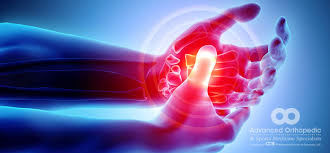
Wrist Ultrasound Scan
The bones of the hand and wrist provide the body with support and flexibility to manipulate objects in many different ways. Each hand contains 27 distinct bones that give the hand an incredible range and precision of motion. The forearm’s ulna and radius support the many muscles that manipulate the bones of the hand and wrist.
Although the anatomy of the hand and wrist is complex and the pathologic conditions encountered are diverse, many of the disease processes are localized, and in many situations, the clinical question is specific and limited. Because of this, ultrasound has always been an attractive imaging modality for evaluation of hand and wrist problems.
Specific situations in which ultrasound offers definite benefits include evaluation of tendon inflammation and rupture, evaluation of palpable masses or suspected occult masses, and evaluation of suspected foreign bodies.
Hand and wrist injuries are also common in athletes and can affect articular structures (ligaments, joint surfaces etc), periarticular tendons, muscles and nerves. These injuries can be acute or chronic. Acute injuries follow sudden traumatic events such as falls or joint sprains. Chronic lesions can be the result of local repetitive microtrauma or the sequelae of an acute injury.
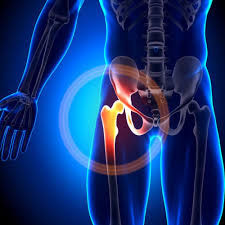
Hip Ultrasound Scan
Hip and groin pain is very common, and ultrasound has been proven to be a useful tool in the assessment of the hip tendons, ligaments, muscles, nerves, synovial recesses, articular cartilage, bone surfaces and joint capsule. The goal of ultrasound scan is to detect and localize pathological processes, to differentiate between intra articular and extra articular pathology.
Many hip diseases are detectable with ultrasound including assessment of the soft tissues, tendons, ligaments and muscles, and of the bone structures and joint spaces. In patients with sports-related hip pain, ultrasound has an important role in dynamic assessment of snapping iliopsoas tendon, joint fluid, bursitis, haematoma and paralabral cyst formation.
